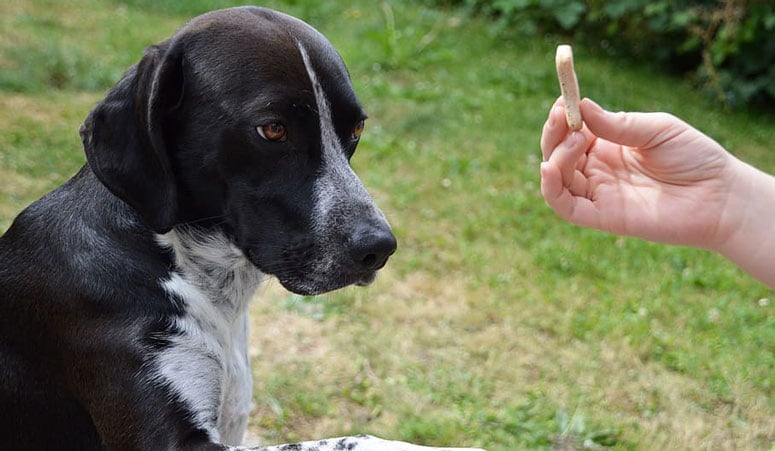Most dogs love to eat. And mealtime can be a fantastic way of building that special bond with your pooch.
But just like humans, every dog differs in terms of how much food they should have, how often they need to be fed, and the best times to feed them.
If you are confused about all these questions, don’t worry, we are here to help.
Below, you will find some comprehensive advice on all these topics, and more.
Before you dive in, remember the information is meant to provide general advice only and is geared towards adult dogs.
- Feeding schedules and requirements for puppies and seniors can be quite different, so we have prepared some specific advice focused on those different stages of life, which you can find here: Feeding Puppies and Feeding Seniors.
- If your dog has any health or underlying medical issues (such as diabetes, an overbite or an underbite), you should seek the advice and assistance of your vet to help work out the best feeding schedule and arrangements.
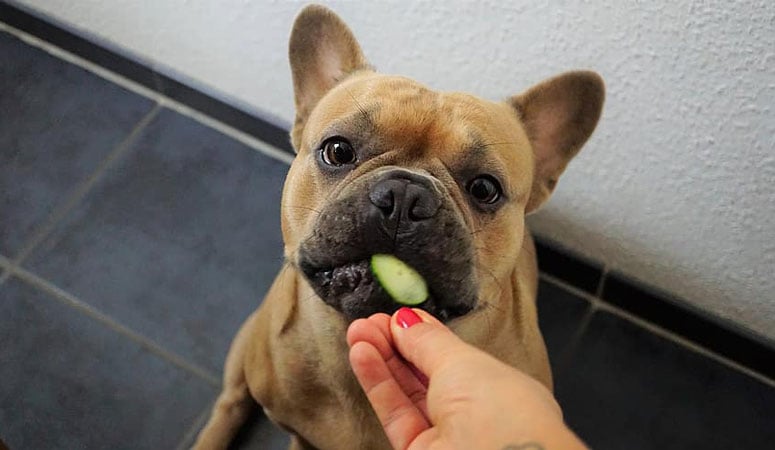
How Often Should We Feed Our Dogs?
There are several healthy ways of feeding your dog. You could try experimenting with different styles to see what works best for your dog, and for you as a family.
Twice A Day Feeding
Most adult dogs only require two meals a day at 8-12-hour intervals. So, feeding them at the same time you eat your breakfast and dinner is one of the easiest ways to go and can also help your pup feel like part of the family.
If you want to go with this feeding method, you should split the suggested amount of food per day for you dog. If you don’t, you’ll be doubling up on its calories, which is not great for their health or your wallet!
Don’t worry, we talk more about how much to feed your dog later.
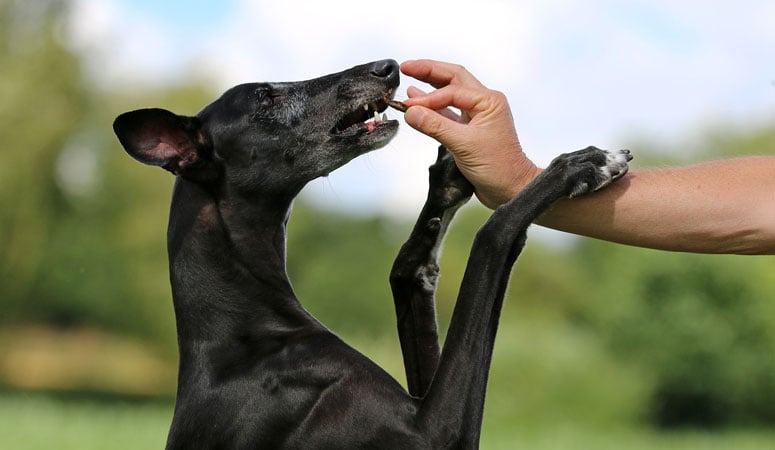
Free Feeding
Free feeding means leaving food out for your dog all day and letting it graze whenever it feels hungry.
This method is great for dogs that are a healthy weight and aren’t food obsessed – so they won’t guzzle all the food down at once and only eat what they want, when they need it.
It can also be a good method for feeding dogs that burn through lots of calories either because they are nursing or are highly active.
But free feeding is not recommended if your dog is diabetic or you have other animals and dogs in the house.
- Leaving food out all day in a multi-pet household makes it difficult to keep track of each dog’s (or animal’s) intake.
- It can also lead to arguments between your pups or the more food absorbed dog may end up eating all the food and becoming overweight, while the other dog goes without.
If you don’t have any of these problems and want to try free feeding, we recommend you use dry food only, which won’t spoil. And keep an eye out to make sure the food doesn’t attract pesky insects, rodents, or scavenger animals.
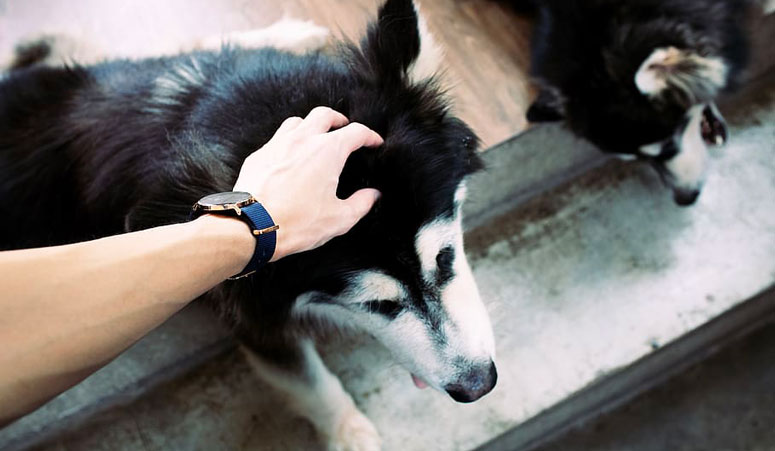
The Timed Feeding Method
Under a timed feeding method, you give your dog a certain amount of time, like 30-45 minutes, to eat. When that time’s up, you throw out whatever he or she hasn’t eaten.
When it comes to their next mealtime (say 8-12 hours later), your dog will be hungry and wanting to eat.
This method can be good if you have a slow or lazy eater, but you don’t want to leave food out all day. But it can get expensive if you are throwing out food all the time.
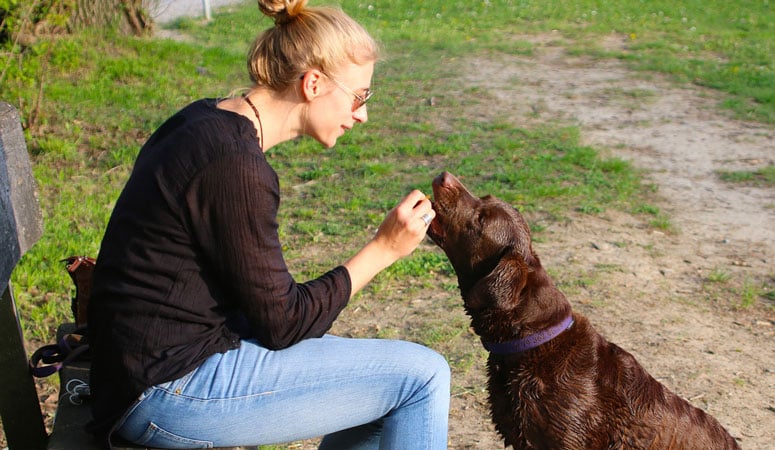
The Slow Feeding Method
If your pooch seems to just inhale their food, you can use a slow eating dog bowl, also known as a slow feeder to, well, slow them down!
Stopping your dog from eating too quickly is a good thing because it reduces the risk of your dog vomiting after eating (which you will have to clean up), reduces the production of excess gas (which you will have to smell), and gives other slower eating pups in your house time to finish their meal.
More importantly, dogs that eat too fast are five times more likely to experience bloat, which can be fatal, than slow eaters. Using a slow feeder bowl helps reduce the risk of bloat in all breeds, but particularly in deep-chested, large breeds that are more at risk like Great Danes, Irish Setters, Boxers, and German Shepherds.
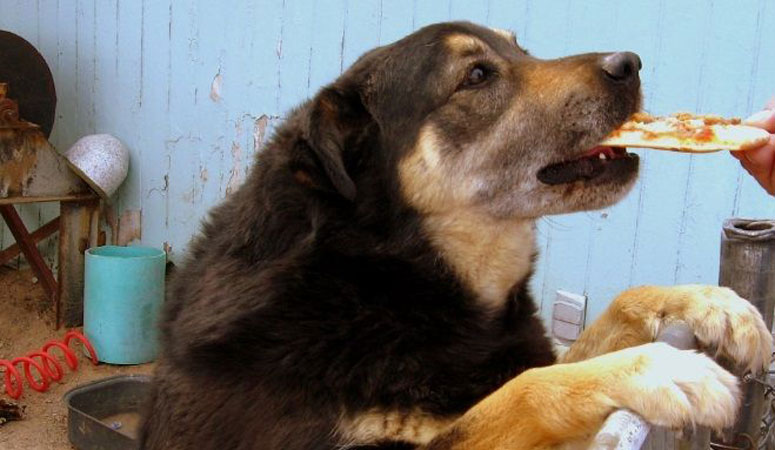
How Much Food Should We Give Our Dogs for Each Meal?
The amount of food your dog needs will depend on it’s size, breed, age, and level of exercise – along with the type of food you are giving them.
Nearly every bag of commercial dog feed you buy will include a label with recommended feeding amounts for your dog, based on their size and weight.
But sometimes these labels can be confusing or use outdated information, which can lead to overfeeding or underfeeding.
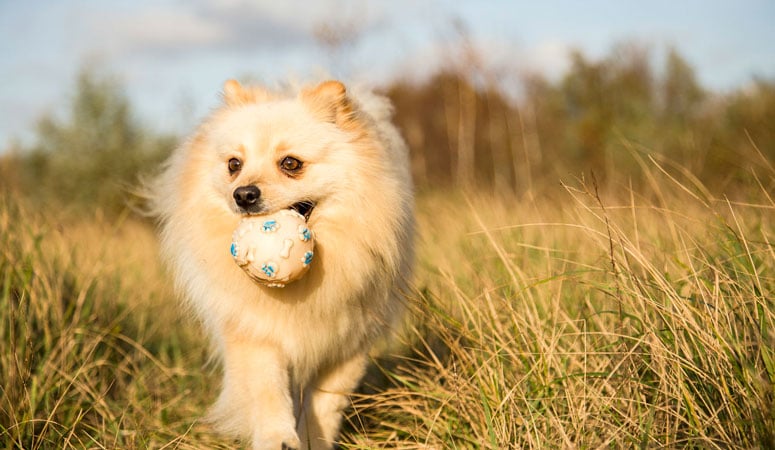
When deciding how much to feed your pooch, you also need to take account of their current weight and condition. For a dog that is already overweight or obese, feeding the recommended amount listed on your dog food may simply make the problem worse.
- If you have a dog that you think is above or below the recommended average weight for its age and breed, you should seek the advice of your vet on the amount and type of food to provide.
Most dogs need about 25 to 30 calories per pound per day to maintain their weight.
- So, on average a 5lb Chihuahua will need around 125 calories per day while a 70lb Labrador Retriever will need around 1750 calories daily.
Of course, you need to figure into this if your dog is a couch potato or high-energy athlete.
If you want to get a bit more scientific about it, you can follow this quick two-step process:
- Do some quick research on your dog’s estimated adult weight. The American Kennel Club provides a great breed weight chart that you can use.
- Use this handy calculator to work out your dog’s recommended calorie intake based on your dog’s ideal weight (from step 1) and their level of activity.
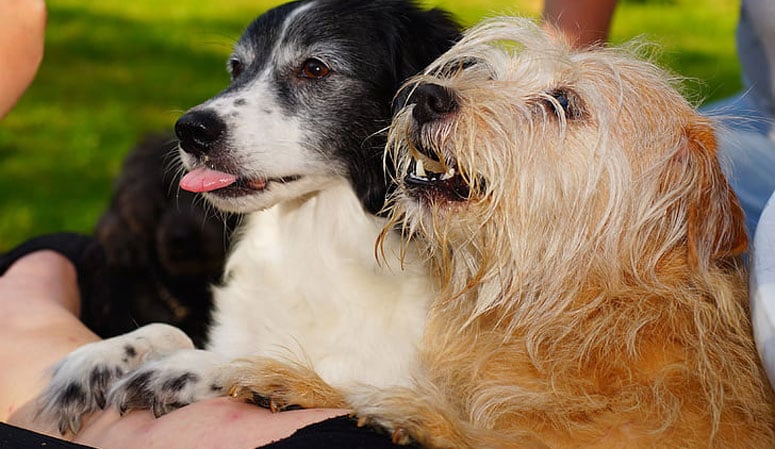
Other Feeding Tips and Tricks
Some dogs are geniuses when it comes to using the powers of their big puppy dog eyes to convince you that they are still hungry and desperately need more food.
If your pooch always seems hungry but are at their ideal weight (or even overweight), you could try feeding them a diet kibble as these are designed to make them fill a bit fuller.
- Adding a small amount of psyllium husk or low-calorie vegetables like kale, pumpkin, carrot, and green beans can also help reduce their hunger levels.
Dog treats should make up 5% to 10% or less of your dog’s daily diet. Any treats used for training should be set aside from your dog’s daily portion of kibble. And should only be offered in small pieces.
Make sure your dog always has access to fresh, clean drinking water.
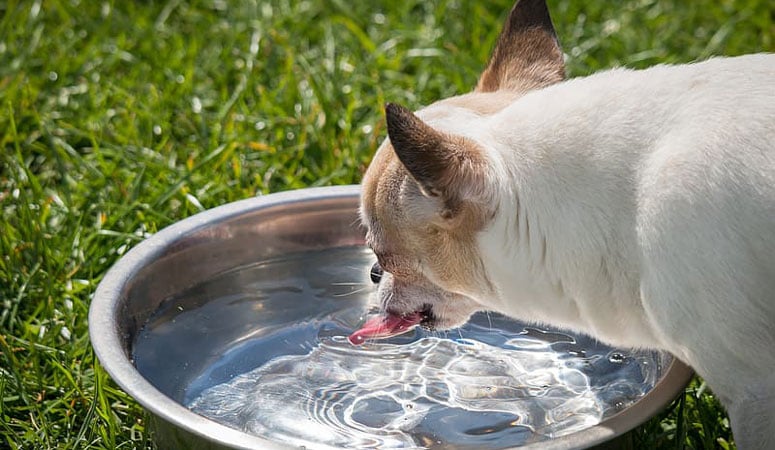
Regardless of the method you use for feeding your dog, not exercising them immediately before or after eating is critical for reducing the risk of bloat.
You might need to adjust your dog’s feeding schedule and amount of food if they are recovering from surgery or an infection; are pregnant or nursing; or if the weather is extremely hot or cold.
If you have an older dog, or a dog with mobility issues, arthritis, or joint disorders you might want to consider using an elevated dog bowl, which puts less strain on their neck.
- But there is some research that suggests that having a raised dog bowl may increase the chances of bloat in large and giant breeds. So, if you’ve got one of these breeds, it might be best to steer away from this type of bowl.
Finally, rather than food, think about whether your best friend may be simply looking for more love and attention. This should be easy to provide, doesn’t cost anything and won’t cause problems to your dog’s health.
Hopefully by now you feel confident that have all the information you need on how to feed your dog.
If you are looking for more advice on what to feed them, check out our information guide here :
What Food Should We Give Our Dogs
